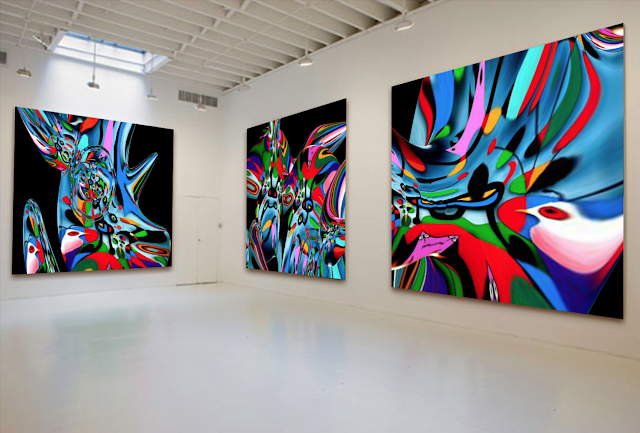This was designed to be a table top mural. I know that that may sound like an oxy-moron but, in my mind, the design should work on both levels. As a table top, it needs a confluencey and compactness. As a mural it needed to represent a theme that not only captivates from end to end but also, one that could be broken down into many compositions with in the overall composition. I've always held a fascination with clock gears. They somehow seem to me, to symbolize my first notions of inner workings. In this day and age of digital everything, old school clockworks move ever closer to being relegated to the realm of crusty funk. With that feeling in hand and a recently down loaded new arsenal of "Grunge Brushes" for Photoshop, I was ready to attack the idea. In this exercise I was able to apply some of the most distressed textures and surfaces to some of the most pristinely cut and crafted machinations that I could find. In the end, as it turned out, polished brass and crisply faceted jewels can make perfectly compatible bedfellows with pealing paint, grunge and grime.

As I was designing this I had happened upon a Chuck Close exhibit that employed enormous photographic portraiture, a Chuck Close trademark but, this time rather than paintings, the gallery was hung with tapestries, a very impressive effect to be sure but, a technology that I'd become familiar with from the last photography expo that I had attended at Jacob Javits Center. It's really no more than a printing process. A photo is uploaded at one end, so to speak, and tapestry comes out the other. In sted of ink jets, a digitaly opperated loom is employed. This tech is mostly marketed to appeal to those whom may like a favorite photo woven into a pillow, a hand bag or perhaps a throw for ones sofa. It was nice to see Mr. Close taking it to monumental applications.

After having seen the throws, I thought that if I figured out the yardage required to upholster my sofa, it might make an interesting pattern but this composition is largely a grunge study, I thought that my new sofa/work bench/storage cabinet might not be the best suited canvass for a collection of greasy gears.
On the other hand, leaving the idea that would yield a grimy looking new sofa, I returned to the technologies application for large picture and mural making. In that, I thought, what would this subject matter look like in as Serene and contemplative a setting as possible. Rothko's Temple sprang to mind.
the illustration below pre-visualizes the concept quite well.
For more on this fascinating technology please click
HERE and
HERE




















































